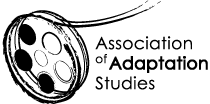 CFP: Ecoadaptations: Mediating Nature and the Environment
CFP: Ecoadaptations: Mediating Nature and the Environment
Editor: Pamela Demory (phdemory@ucdavis.edu)
Abstract Due Date: 31 March, 2024
Proposals are invited for an edited collection of essays that explore the relationship between adaptation studies and the environment. The editors of the Palgrave Studies in Adaptation and Visual Culture series have expressed interest in publishing this collection.
In his 2023 article, “Towards an Ecocritical Adaptation Studies,” Robert Geal argues persuasively that adaptation studies can “help address the fundamental ecocritical question—what is it about our culture(s) which cause(s) us to endanger our own survival by treating the biosphere with such contempt?—by outlining how human attitudes towards the environment, and cultural expressions of those attitudes in the form of various kinds of texts, are adapted through time, across cultures, between texts, and so on. The texts which we analyse can provide evidence for this historical and intercultural evolution of ideas about the relationships between humanity and nature.”
This proposed collection is inspired by Geal’s call for developing an ecocritical adaptation studies, and also by Kyle Meikle’s call for a “green movement in adaptation studies” (“Is Adaptation Studies Sustainable?”), and by the many enlightening presentations at the 2023 Literature/Film Association Conference (“Ecologies of/and Adaptation”). It will explore how elements of the natural world, the environment, landscapes, are represented and adapted in a variety of media.
Questions that might be explored in proposed essays include, but are not limited to
- How is our conception of nature framed, mediated, colored by the stories we tell about it? How do those stories evolve, mutate, replicate over time and space and in different media: film, literature, television, theatre, music, painting, games, etc?
- How do environmentally-focused adaptations encourage/discourage or mediate public response to climate change?
- How do adaptations of stories about the natural world address or reflect race, gender, sexuality, class, and ability?
- How do non-narrative art forms—painting, sculpture, music, etc.—represent, replicate, adapt nature or the environment?
- How is nature represented and adapted in different genres: science fiction, horror, thriller, mystery, detective, romance, western?
- How is the natural world mediated through documentary film, nature writing, journalism, scientific writing, and other nonfiction media? How do scientific ideas about nature evolve in and through different media adaptations?
- How have traditional forms of nature writing such as the pastoral evolved over time and across media?
- How have ideas about nature—as wilderness, as garden, as sacred—evolved over time and in different media?
- How have narratives about nature from Indigenous cultures been transformed, appropriated, colonized, reborn?
Please send inquiries and 500-word proposals to Pamela Demory at phdemory@ucdavis.edu, by March 31, 2024. Essays of approximately 5000 words due by December 15, 2024.
About the editor: Pamela Demory is on the editorial board of The Journal of Popular Culture and Adaptation and has edited two previous collections: Queer Love in Film and Television (with Christopher Pullen, 2013) and Queer/Adaptation (2019, Palgrave Adaptation and Visual Culture series).
